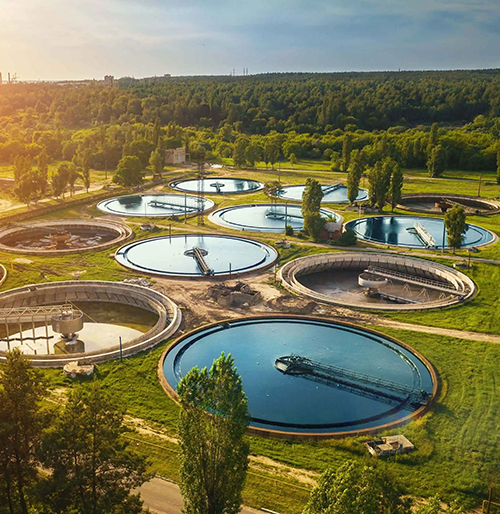
The Critical Role of Flow Control in Sodium Hypochlorite Generator Operation

In modern water disinfection, sodium hypochlorite generators have become essential equipment in municipal water supply, wastewater treatment, swimming pool disinfection, and other applications. By electrolyzing salt water to produce sodium hypochlorite on-site, they eliminate the safety risks associated with transportation and storage of liquid chlorine. Moreover, they enable on-demand generation of fresh disinfectant according to actual water quality demands, ensuring both effectiveness and safety of drinking water.
During operation, precise control of softened water and brine flow rates is crucial—it directly determines chlorine production efficiency and system stability. Appropriate flow settings improve yield and product quality, while flow abnormalities can lead to reduced electrolysis efficiency, accelerated equipment wear, and even system failure.
Modern sodium hypochlorite generators are typically equipped with advanced automatic adjustment functions and multiple safety mechanisms. If abnormal flow or elevated electrolytic cell temperature is detected, the system immediately triggers an alarm to prompt operator intervention. Furthermore, remote monitoring capabilities allow service teams to access real-time operational data, enabling fault prediction, remote diagnosis, and rapid response— truly preventing issues before they arise.
1. The Impact of Flow Control on Sodium Hypochlorite Generation

The flow ratio between softened water and brine directly affects the stability of the reaction environment inside the electrolytic cell. Proper flow ensures sufficient electrolysis, maintains electrode efficiency, and extends equipment service life.
Concentration Control
The flow ratio of softened water to brine determines the salt concentration in the electrolyte. Excessively high concentration accelerates electrode degradation, while too low concentration reduces chlorine production efficiency. The ideal salt concentration should be maintained at around 3%, which depends on precise flow regulation. For instance, the Purevita system is equipped with dedicated flow meters for both streams to ensure stable ratio control.
Current Efficiency
Current efficiency is closely related to brine concentration. Within the optimal concentration range, current efficiency can exceed 75%; outside this range, it may drop below 50%, leading to energy waste and reduced output.
Temperature Regulation
The flow of feedstock also serves a cooling function. insufficient flow can cause temperature rise in the electrolyzer, accelerating electrode corrosion and decomposition of sodium hypochlorite into chlorate—posing compliance and health concerns. Excessive flow lowers temperature, reducing conductivity, slowing reaction rate, and increasing energy consumption.
2. Identifying and Addressing Flow Abnormalities

Below are common flow-related issues and recommended responses:
Reduced Output with Stable Current
Likely caused by excessive softened water flow leading to low concentration. It is recommended to measure the inlet concentration with a salinometer and adjust by either reducing softened water flow or increasing brine flow.
Abnormal Rise in Cell Temperature
Usually due to insufficient total flow, resulting in inadequate cooling. Check pump and valve status, and increase total flow to maintain the inlet-outlet temperature difference within 5–8°C.
Accelerated Electrode Scaling
White deposits on electrodes may indicate insufficient softened water flow (causing high concentration) or the need for softener resin regeneration. Increase softened water flow first; if the problem persists, inspect and regenerate the softener resin.
3. Conclusion
Precise flow control is fundamental to the efficient and stable operation of sodium hypochlorite generators. Operators should set and adjust softened water and brine flow rates based on actual water quality and system conditions. Combined with systematic monitoring and regular maintenance, these measures maximize equipment performance and ensure safe, economical, and sustainable water disinfection operations.
